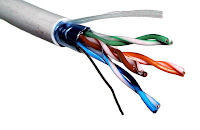In week 6, lecture showed us about Microsoft Office. Microsoft Office includes a wide variety of programs such as: Microsoft Word, Microsoft Power Point, Microsoft Excel, Microsoft Access, Microsoft Outlook, Microsoft Publisher, Microsoft One Note Microsoft Communicator, Microsoft Web Apps, Microsoft SharePoint Workshop and Microsoft Info Path.
 |
| Microsoft Power Point |
 |
| Microsoft Excel 201 |
Features of Office 2010 include:
- Ribbon interface and Backstage View across all applications
- Background Removal Tool
- Letter Styling
- The Word 2007 Equation editor is common to all applications, replacing Microsoft Equation Editor 3.0
- New Smart Art templates
- New text and image editing effects
- Screen Capturing and Clipping tools
- Live collaboration functions
- Jump lists in Windows 7
- New animations and transitions in PowerPoint 2010
- View Side by Side/Synchronous Scrolling in Word 2010
Lecturer also showed us how to start a Microsoft Word and step by step he explains clearly about words, designing, basic text operation, formatting and so on. So after this week finish I understand it more especially when we did the interesting exercise, students are supposed to make a logo following the instructors during lab
The pictures above, are the some of the examples of Microsoft Office Word tasks, that we did in class. By end of the session, I have learned; Basic tasks in Microsoft Word, Identify the components of the Microsoft Office Ribbon, Enter text in a word document.
Format text and so on. Bullets and numbering: Word has extensive lists of bullets and numbering features used for tables, lists, pages, chapters, headers, footnotes, and tables of content. Bullets and numbering can be applied directly or using a button or by applying a style or through use of a template. Some problems with numbering have been found in Word 97-2003. An example is Word's system for restarting numbering. The Bullets and Numbering system has been significantly overhauled for Office 2007, which drastically reduces these problems. Users can also create tables in Word. Depending on the version, Word can perform simple calculations. Formula are supported as well.








